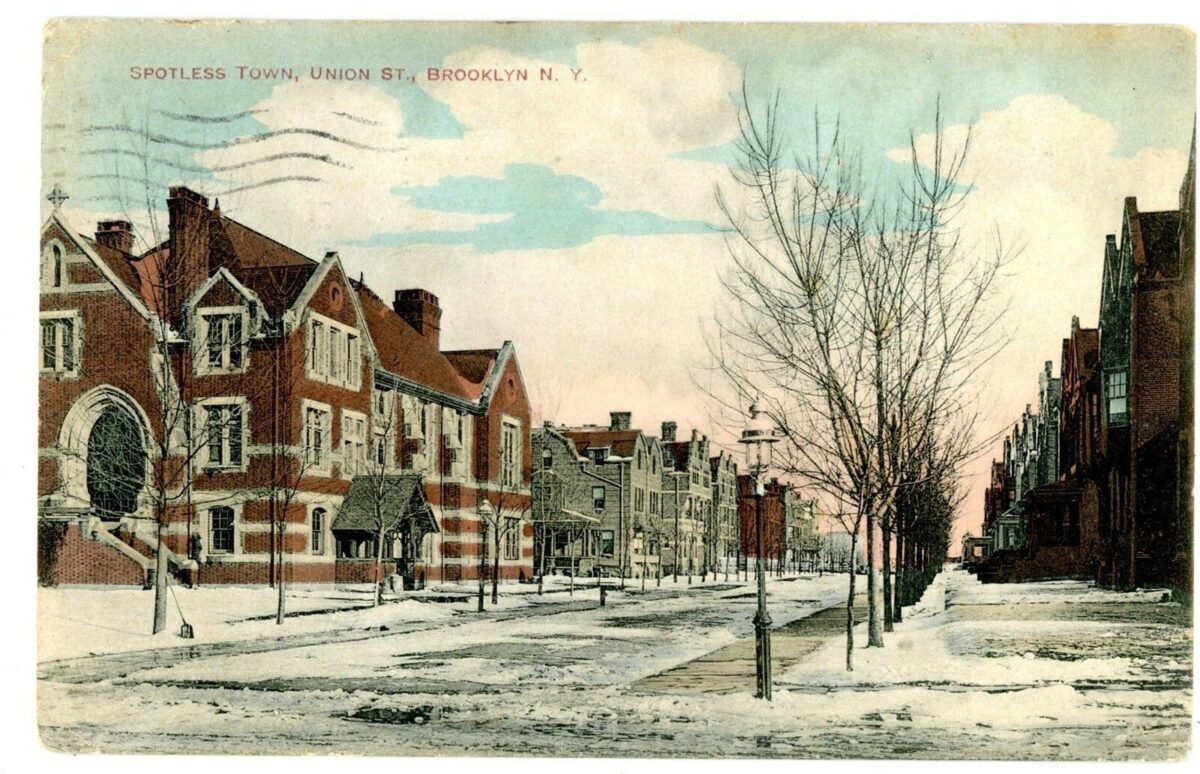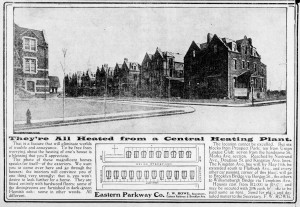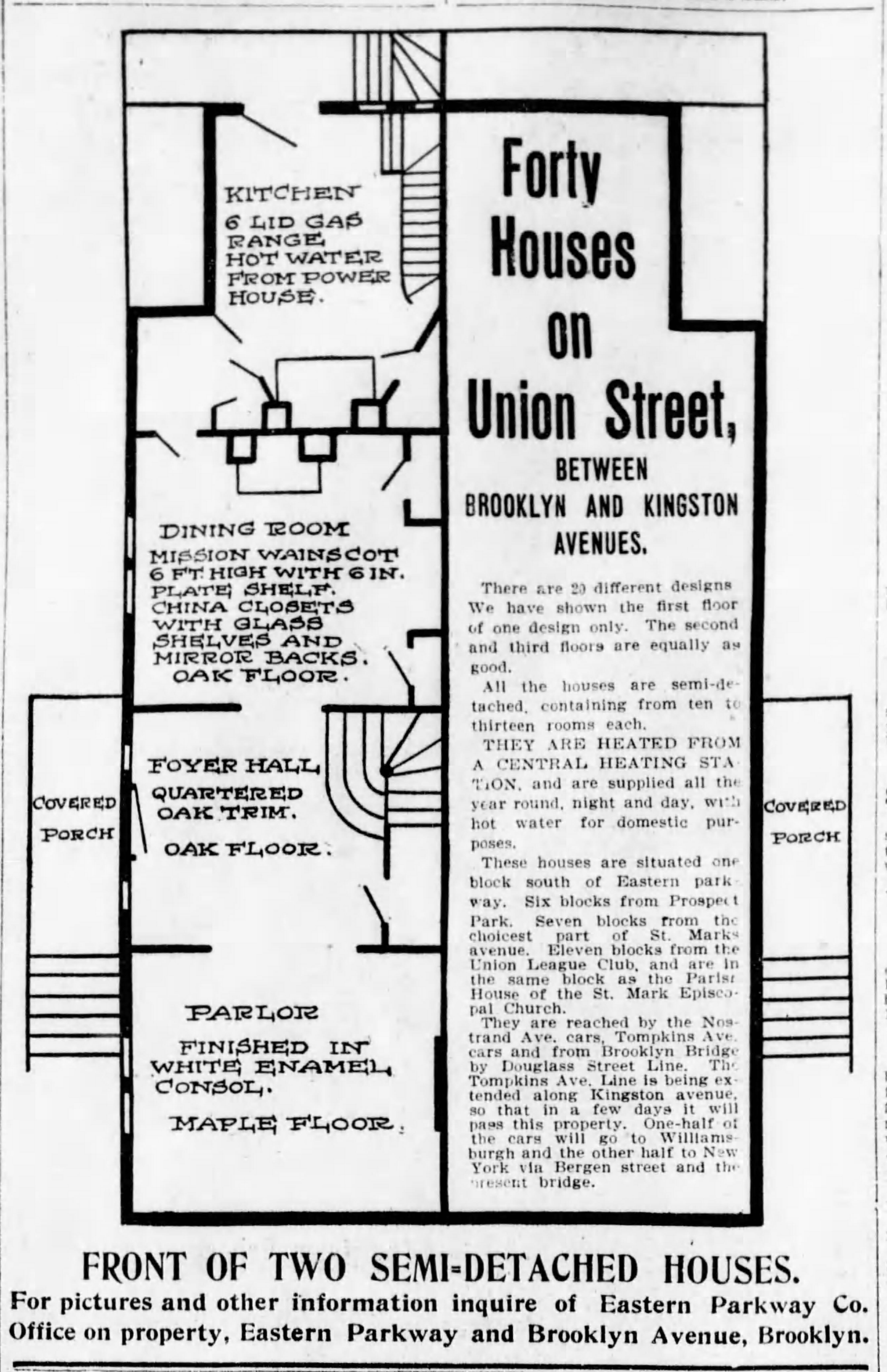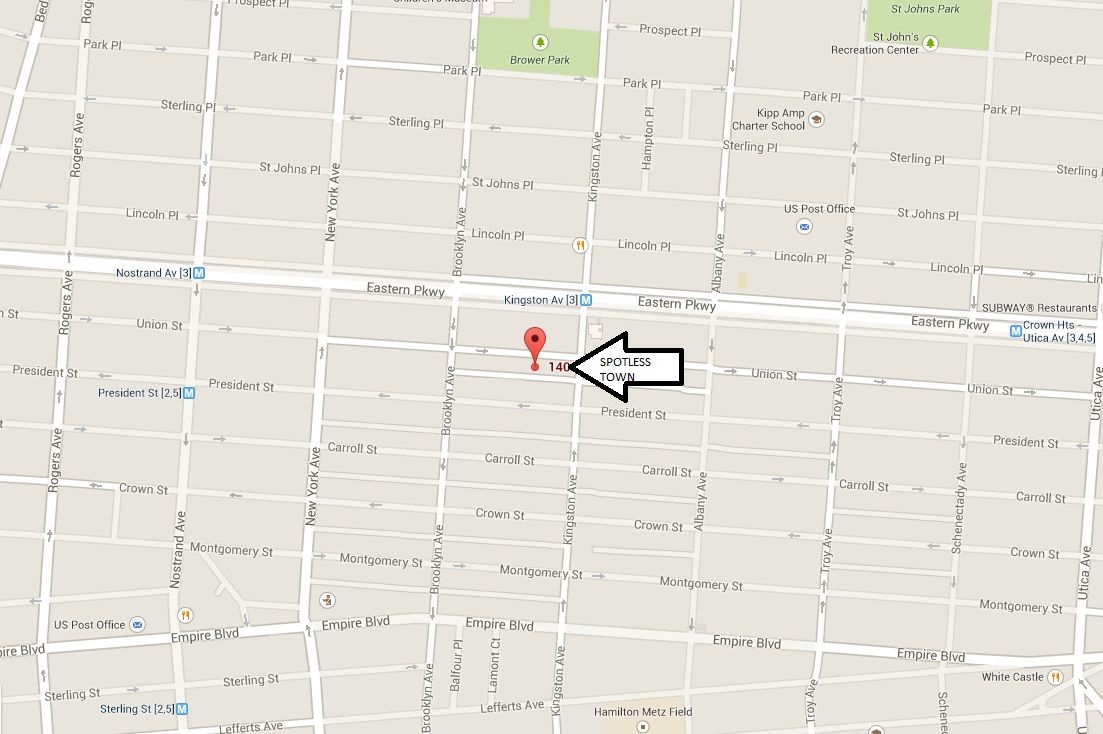A SPOTLESS TOWN IN SPOTTY CROW HILL (1903)

Brownstone Detectives investigates the history of our clients’ homes.
The story you are about to read was composed from research conducted in the course of one of those investigations.
********************************************************************************************************************************
It was a novelty back then.
An entire block of newly built houses was connected with underground cast iron heating pipes.
“They’re all heated from a central heating plant,” the ad for the new houses stated. “To be free from worrying about the heating of one’s house is a blessing that you’ll appreciate.”
“SPOTLESS TOWN”
 Frederick W. Rowe built them, and may have been inspired to use the name by a recent Broadway musical of the same title (which incidentally featured “a pair of midgets in a baby elephant costume and a dog trained to grab culprits by the seat of the pants” – it closed after one week). Who could fail, though, to see the sense of using a known name – one which, additionally, augured cleanliness?.
Frederick W. Rowe built them, and may have been inspired to use the name by a recent Broadway musical of the same title (which incidentally featured “a pair of midgets in a baby elephant costume and a dog trained to grab culprits by the seat of the pants” – it closed after one week). Who could fail, though, to see the sense of using a known name – one which, additionally, augured cleanliness?.
Buyers were more and more attracted by the new homes being built in this “Eastern Parkway” section of town. Previously known as Crow Hill, comprised of a collection of shanties and pig sties, it entered a transitional stage and would later become the upper middle class Crown Heights around 1915. And these buyers were less and less interested in living in homes that already existed in the older areas – that were…well….less spotless.
So the choice of name seemed appropriate for marketing purposes.

BUT…CENTRAL HEATING???
By 1903, while central heating of entire blocks of buildings was rather common on Manhattan, for Brooklyn, this was a rarity and the builder may have been taking a risk in offering it.
How would the plant be maintained? Who would be responsible for its upkeep? Was there a charge on top of the cost of the house to maintain the apparatus. This almost seemed too similar to the responsibilities inherent in buying into a co-op building.
Regardless of these details, the builder noted that all of the buildings, in addition to having central heat, “were supplied all the year round, night and day, with hot water for domestic purposes.”
AMENITIES
There were 20 “different designs” of the Spotless Town houses. The kitchens each had a “6-lid gas range,” the dining rooms had “mission wainscot, 6 ft. high with 6 inch plate shelf, china closets with glass shelves and mirror backs,” and “oak floor.”
The Parlor, at the back of the house, was “finished in white enamel consol,” each with a “maple floor.”
The builder further extolled the new buildings, noting that the location “could not be excelled.”
They were “but six blocks from Prospect Park; ten from Union League Club; seven from the handsome St. Marks Ave. section.”
Rowe was clearly selling to a certain clientele.

———————————————————————————————————————–
 Brownstone Detectives is an historic property research agency. Our mission is to document and save the histories of our clients’ homes. From our research, we produce our celebrated House History Books and House History Reports. Contact us today to begin discovering the history of your home.
Brownstone Detectives is an historic property research agency. Our mission is to document and save the histories of our clients’ homes. From our research, we produce our celebrated House History Books and House History Reports. Contact us today to begin discovering the history of your home.